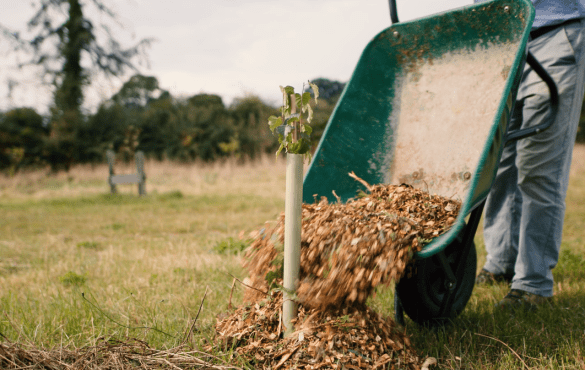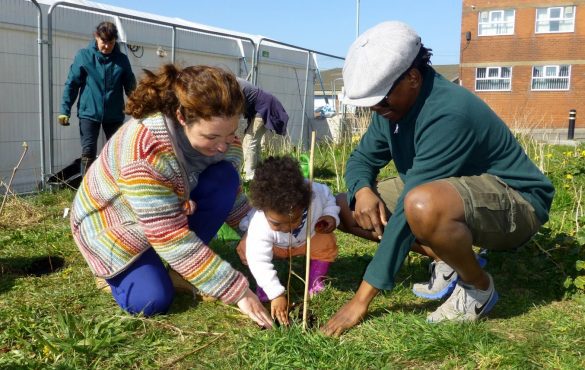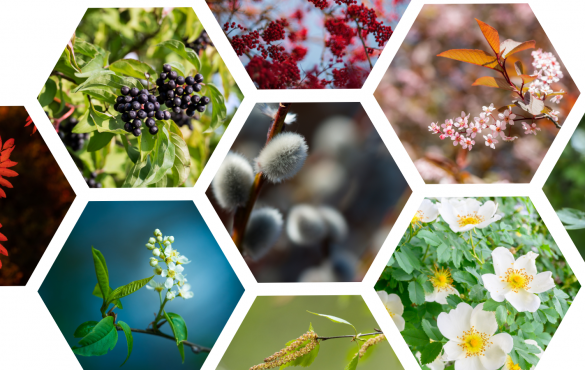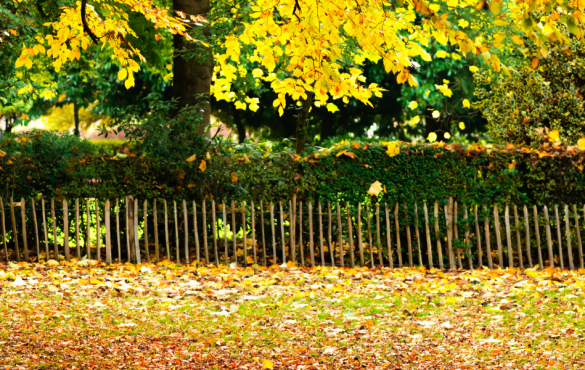TCV’s tree companion care series ensures young trees have the best chance of survival.
With the help of people like you claiming FREE trees through I Dig Trees, we are planting millions of healthy trees for climate, wildlife and for communities.
Head here for the first blog in this series – heeling in and be sure to read to the end of this article to catch our video guide on how to look after new trees!
How to care for young trees
Now that you’ve planted them, It’s important not to forget about your trees.
Once they are carefully planted in the right spot, trees will happily grow in the spring and summer months – reaching out for water, nutrients and sunlight. But there needs to be a commitment to maintain trees properly to get them established before they can fully go it alone.
Saplings are tough and they’ll be putting on new growth above and below ground to make the most of the growing season, but they didn’t germinate where you planted them. They’ve been uprooted and moved to an entirely new location at the start of their lives, so it’s important to give them a helping hand to become fully independent in their new home.
Here we bring you some tips to ensure your trees survive their first few years in their new homes and go on to thrive in subsequent years!
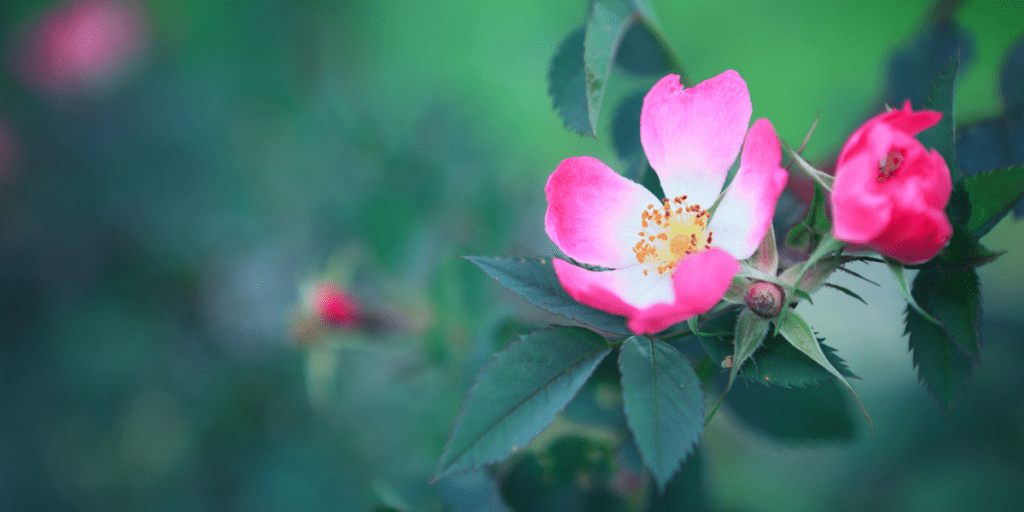
Community stakeholder engagement
Make sure people know where they are – don’t let them fall at the first hurdle.
You’ve had permission to plant the trees on publicly accessible land, but it’s worth reminding the landowner that the trees have been planted, and exactly where.
Public open spaces often have conflicting uses. Reminding the landowner and any other local groups or communities who use the site that there’s a new woodland will avoid accidental damage, or worse – grass mowing undoing all of your hard work (not to mention damaging or even destroying the trees).
Bonus if you can get their support to maintain them in the longer term!
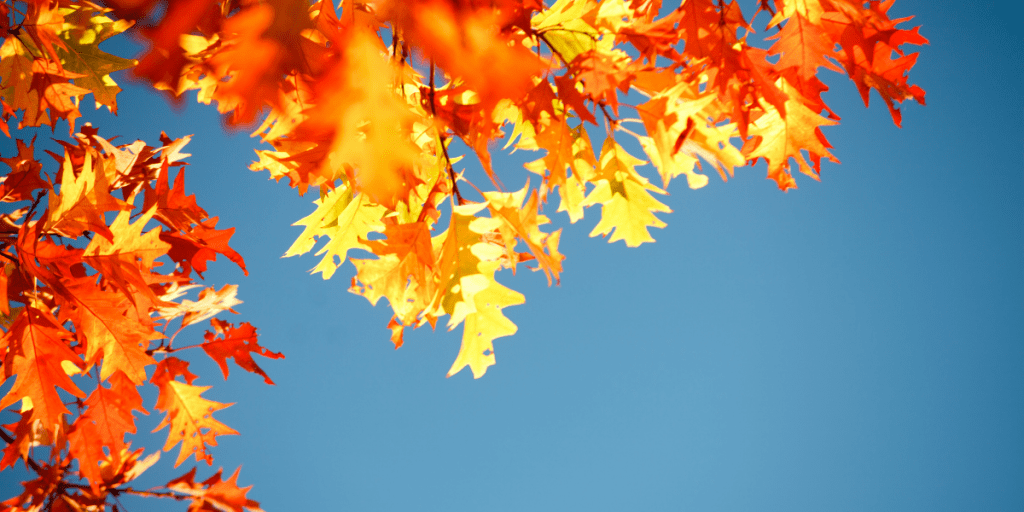
Weeding around new trees
Remove the competition – weeds and grass can be vigorous and steal nutrients and water away from your trees.
Careful weeding around the base of each tree is key to giving them the best start. Try to keep a circle around the base clear of any weeds. One metre in diameter is ideal.
It doesn’t need to be picked clean of everything, you’ll see the weeds that grow big will have already sprung up and will be looking strong. Things like thistles, dock leaves, big clumps of dandelions are a big problem for new trees – and any grass growing up through the tree guards.
Keeping them under control for the first few years will have a massive impact on tree growth. The best time to weed them out is early summer before they set seeds, and again in late summer for any that have managed to re-grow – those will be next years’ competition.
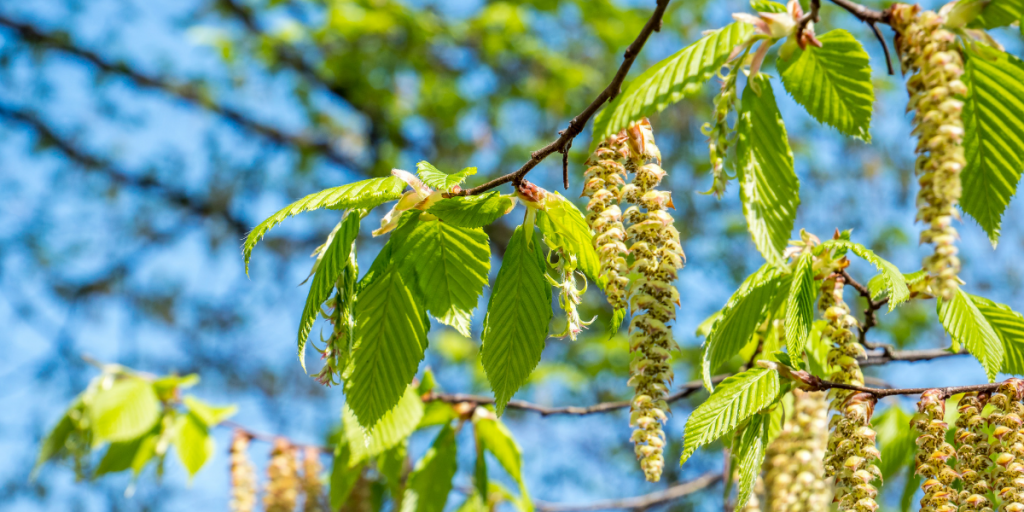
Mulching young trees
Keep the weeds at bay – mulch is your best friend, and the trees will love it too!
Applying a layer of mulch around the base of each tree will not only keep weeds at bay by depriving them of sunlight – giving you less work to do – it will also act as an insulating ‘blanket’ for the delicate tree roots.
A layer of mulch (compost, wood chip, cardboard or any other biodegradable material) will not only protect the trees from cold spells, but it’ll also help to insulate them against high temperatures too. With the effects of climate change and more extreme weather conditions, this temperature regulation can really help.
Be careful not to pile it up against the stem of the tree so the bark can still breathe.
Mulch is also great at retaining moisture and preventing it from evaporating from the soil – another big impact on the survive and thrive front. The presence of mulch is also great for identifying where the trees are – especially when they’re tiny and not too visible from the seat of a ride on mower!
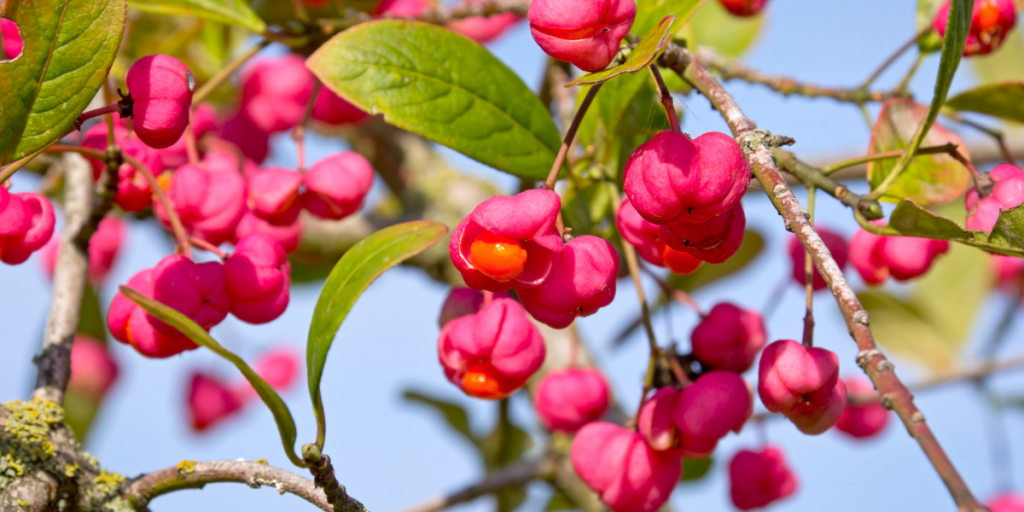
Watering new trees
Give your trees a drink – especially through the drier seasons.
Young trees will quickly adapt to their new surroundings, their roots will immediately go in search of natural water sources – sending their roots down into the soil to find the water table.
But in dry spells, they may struggle. Look for signs of wilting, or if the surrounding vegetation is turning dry and brown. If this is the case, you may feel the trees need a little extra water.
If you decide that you need to give them a drink, it’s better to thoroughly saturate the trees infrequently – rather than little and often. Deep watering helps to encourage the roots at the bottom to keep growing downwards towards a natural water source. Watering just at the surface will help them in the short term but can make them reliable on a regular supply nearer the surface – and you don’t want to tie yourself to watering for ever! They need to be independent as soon as possible.
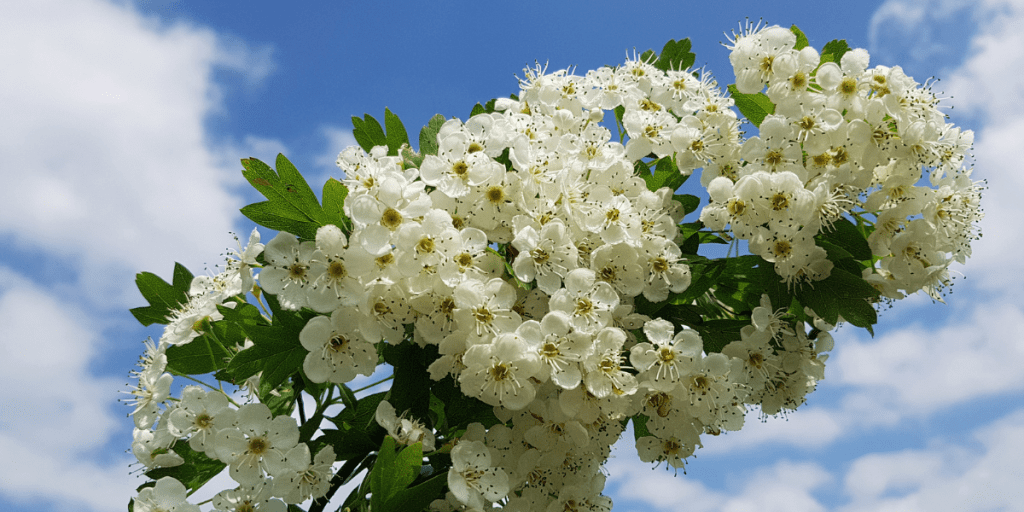
Protecting young trees
Check tree guards regularly, especially after bad weather.
Tree guards protect young trees from small mammals looking for new sweet vegetation to nibble. They also give new trees a more stable microclimate in which to grow.
However, insects and fungal infections can also find these conditions appealing.
Keeping on top of weeds, and making sure there’s nothing else growing inside the tree guard along with the tree will help. Trees need air and space to protect them from certain diseases that like the damp, humid conditions of dense vegetation.
By keeping the tree guards secure, and free of weeds, you’ll improve the success of the tree, keeping it’s stem and leaves clean and dry and avoiding any decay that could introduce infections.
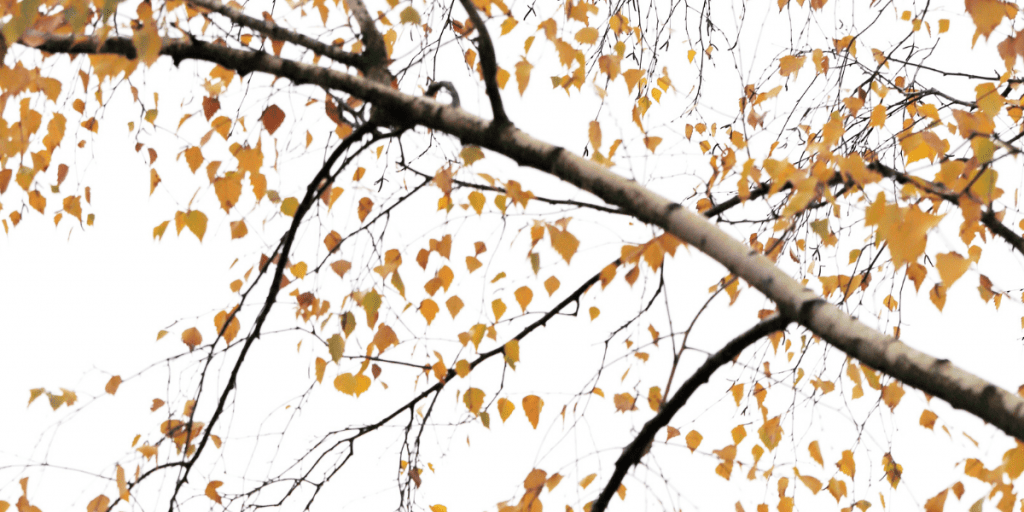
Time to go it alone
Tree guards are too often forgotten about. Don’t forget to remove tree guards when they’ve done their job
Tree guards come in all shapes and sizes, they can be made from plastics, cardboard, recyclable plastics or biodegradable materials. In all cases it’s important to check the condition of the trees AND the guards.
Even biodegradable tree guards can last many years out in the environment. Most guards are designed to split or stretch to allow the tree trunk to grow thicker, but it doesn’t always work and they can eventually cause damage.
Don’t let that happen – remove them before they become a problem, and check how best to dispose of them – can they be recycled locally, could they be composted? Nobody likes to see the countryside littered in waste – even biodegradable waste, but especially plastic.
After 3-5 years, the threes should be strong and vigorous (if you’ve looked after them properly) and they don’t need to rely on the additional protection any longer.
If you’re happy that the trees are romping away, then take the guards off and dispose of them responsibly. Or re-use them for future planting.
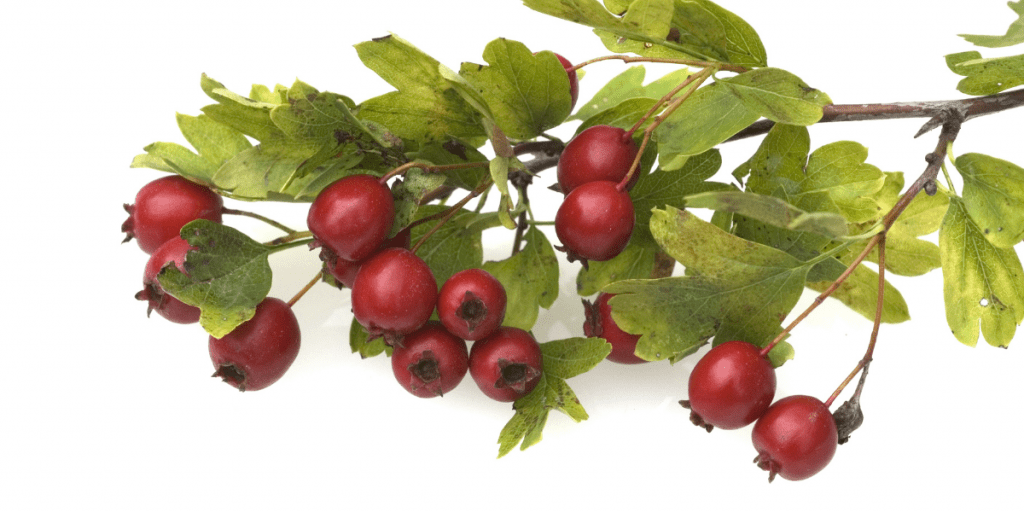
Enjoy your young woodland
Follow this guide and you’ll give your new trees the very best chances of survival.
You can enjoy the fruits of your labour – especially if you picked fruiting species! – and watch your new woodland develop into a wildlife-rich habitat for your community to enjoy for many years to come.
Keep up to date with the latest news and activities from The Conservation Volunteers by following us on Twitter, Facebook, LinkedIn and Instagram. You can also sign up to receive our Greenzine newsletter for more ways to get involved.
TCV’s Community Network supports thousands of groups across the UK who are passionate about protecting their local environment. Join the network to access grant funding, support and guidance, discounted insurance and trees, seeds and equipment.

